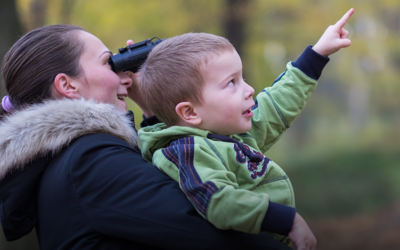
Myopia (Nearsightedness) Management
At VisionQuest Eyecare in Greenwood, we specialize in advanced myopia management to help children maintain clear vision and prevent future eye health complications. Our dedicated team, led by Dr. Chris Browning and Dr. Gaia Hess, utilizes state-of-the-art technology, industry-leading expertise, and customized treatment plans to effectively slow the progression of myopia.
Through our partnership with Treehouse Eyes®, we offer cutting-edge solutions designed not only to correct vision but also to reduce long-term risks associated with high myopia. From early diagnosis to ongoing monitoring, we’re committed to giving your child the best possible vision for success in school, sports, and everyday life

Why Is Myopia Management Important?
Myopia, or nearsightedness, is more than just needing glasses—it’s a condition that worsens over time if left untreated. As the number of myopia cases rises each year, children are experiencing progressively stronger prescriptions and increased risks for serious eye diseases, including:
- Retinal detachment – A sight-threatening condition linked to high myopia
- Glaucoma – Increased eye pressure that can lead to vision loss
- Early cataracts – Clouding of the eye’s natural lens at a younger age
Beyond eye health, worsening myopia can impact a child’s academic performance, sports participation, and daily life. While glasses improve vision temporarily, they don’t stop myopia from progressing—but our customized treatment plans do.
How Myopia Management Works
The sooner myopia is detected, the better we can slow its progression and protect your child’s long-term vision. Our experienced eye doctors develop a personalized treatment plan that focuses on:
- Slowing myopia progression to reduce future prescription strength
- Minimizing risks of eye diseases associated with high myopia
- Providing long-term vision stability for school, sports, and daily activities
Even though myopia cannot be completely cured, early intervention with VisionQuest’s proven treatments can significantly reduce its severity and preserve your child’s eye health for the future.

Our Myopia Management Solutions
At VisionQuest Eyecare, we offer the latest advancements in myopia control to ensure the best outcomes for your child. Our partnership with Treehouse Eyes® allows us to provide the most up-to-date, research-backed treatments available.

Ortho-K
Ortho-K lenses are custom-designed for each child and gently reshape the cornea while they sleep. By wearing these lenses overnight, children can enjoy clear vision throughout the day without needing glasses or daytime contacts. Ortho-K not only improves vision but has been clinically proven to slow myopia progression effectively.

Atropine Eye Drops
A low-dose prescription of atropine eye drops can significantly reduce the speed of myopia progression in children. These drops are applied before bed and can be used alone or in combination with other treatments, depending on your child’s needs.

Multifocal Contacts
Soft multifocal contact lenses provide clear vision at multiple distances while actively reducing the progression of myopia. These customized lenses correct nearsightedness while influencing how light focuses on the retina, helping to slow the eye’s growth over time.
Why Choose Us?
At VisionQuest Eyecare, we’re committed to shaping a clearer future for children with myopia. With over 25 years of experience, our team includes two specialized doctors in each office dedicated to childhood myopia control.
We are proud to be two of only 74 Treehouse Eyes® practices in the country, offering advanced myopia management solutions. Using cutting-edge optical biometry, we precisely track your child’s eye growth down to a fraction of a millimeter, ensuring customized care with the latest technology. Your child’s vision is our priority—because their future should be in focus.
Recent News
Can Myopia Worsen Despite Correct Visual Habits
Understanding Myopia Progression: The Role of Corrected Visual Habits Once myopia occurs, will the degree continue to increase even if bad visual habits are corrected? Let’s explore the efficacy of...
Top Myopia Treatment Options For Children
Myopia, often known as nearsightedness, is a common vision issue that typically develops between children aged 6 to 12. Around 30% of teenagers, 9% of kids in school, and 5% of preschoolers have it....
Do Your Eyes Grow?
The Complex Relationship Between Eye Growth and Myopia Development The human eye is a remarkably dynamic organ that undergoes natural growth and changes over a lifetime. One key factor that...
Things to Consider When Choosing A Pediatric Optometrist
You want your children to develop healthy eyes and learn how to take care of their eyes as they grow up. As a parent, you also want to make sure that your child can see well enough to do the things...
Does Myopia Get Worse with Age?
Does Myopia Get Worse with Age? What Is Myopia? Myopia, also known as nearsightedness, is a common vision problem that will affect half the world's population by 2050. It occurs when the eye is...
6 Practical Ways To Prevent Myopia From Worsening In Children
Myopia or nearsightedness is a condition that can be brought about by many factors including genetic inheritance. It alters the shape and structure of the eye limiting its capability to focus on...






